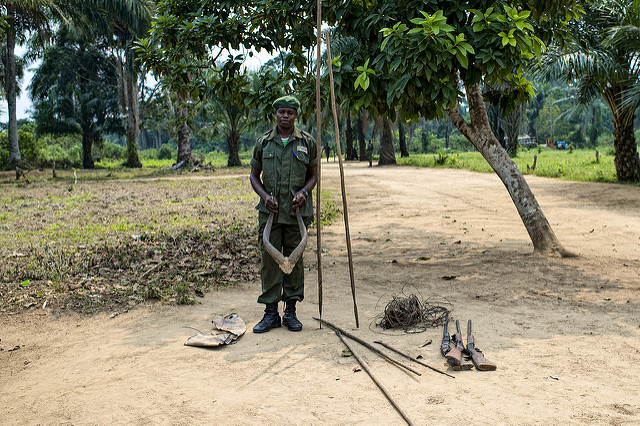Protected areas across the world are most threatened by unsustainable resource use and human disturbance, a new study has found.

The authors of this paper, published this week in Conservation Letters, looked at data from nearly 2,000 terrestrial protected areas to identify the most common threats they face. Unsustainable hunting and negative impacts from recreational activities were the most commonly reported threats by protected area managers, occurring in 61% and 55% of all protected areas considered in the study.
There were distinct geographical differences in where these threats occur between developing and developed countries. Protected areas also reported higher risk from threats if they were in countries that suffered from corruption and had a lower Human Development Index (HDI) score.
Threats from overexploitation, in particular hunting, were most prevalent in developing countries, where local communities in and around protected areas depend on hunting and resource collection for their livelihoods.
“Wildmeat hunting has provided an important source of food and income for local communities for millennia. However, in many areas hunting levels are now unsustainable, negatively impacting biodiversity and the rural communities which depend on it,” remarked Lauren Coad, one of the authors of the paper and a Research Associate at CIFOR. This has been a result of increasing human populations, demand from urban centres and improved access to once remote areas, Coad pointed out.
According to Coad, potential solutions may include reducing the demand for wildmeat in cities, where it is not generally an essential component of diets; the provision of alternatives to wildmeat in provincial towns, such as domestic chicken and other livestock; and the sustainable management of wildmeat use and trade in rural areas. “Around protected areas, it will often involve collaborative co-management of wildlife resources between local communities and protected area managers.”
In developed countries, threats were more likely from human disturbance through recreational activities, such as off-road vehicle access, cross-country skiing, mountain biking or hiking. These geographically distinct threats highlight the need for different solutions on the ground, including ensuring sustainable livelihoods for local communities and better management of visitor activities in protected areas.
Assessing threats at eye level
The paper highlights that the most serious threats to protected areas are difficult to monitor using remote sensing techniques, such as satellite images, and reinforces the importance of collecting information from managers of protected areas and other experts.
Neil Burgess, an author of the paper and Head of the Science Programme at the UN Environment World Conservation Monitoring Centre (UNEP-WCMC), highlighted the importance of monitoring biodiversity on the ground.
“While advances in technology have led to important steps forward in our knowledge of the human impacts on global biodiversity, such as forest loss or changes in the extent of sea ice, it cannot replace the experience of managers of protected areas and local communities, who have in-depth knowledge of local threats to biodiversity and how these can be managed,” Burgess explained. “We need to make sure that this knowledge and experience is collated and used alongside more easily accessible data such as satellite imagery.”
